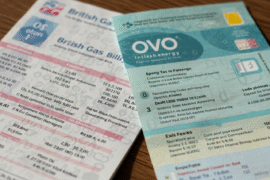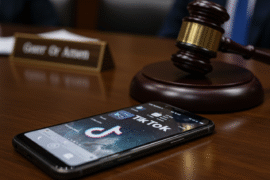This article may contain references to products or services from one or more of our advertisers or partners. We may receive compensation when you click on links to those products or services. Nonetheless, our opinions are our own.
The information presented in this article is accurate to the best of our knowledge at the time of publication. However, information is subject to change, and no guarantees are made about the continued accuracy or completeness of this content after its publication date.
- Trademark Registration Costs and Process Explained
- What Trademark Registration Means
- What a Trademark Is
- Why Trademark Registration Matters
- Initial Steps Before Applying
- Trademark Registration Steps
- Cost Breakdown of Trademark Registration
- Trademark Maintenance Requirements
- Mistakes to Avoid
- Final Thoughts on Trademark Registration
- Frequently Asked Questions
- Recommended Reads
Trademark Registration Costs and Process Explained
Trademark registration is a critical step for safeguarding your brand and intellectual property in the United States. This guide outlines the costs involved in registering a trademark and offers insights to help you make informed decisions. By understanding the process and associated expenses, you can confidently navigate the trademark system to protect your brand identity.
What Trademark Registration Means
A trademark is a unique symbol, logo, phrase, or design that distinguishes your brand and helps customers recognize your products or services. Registering a trademark provides legal protection, granting you exclusive rights to use the mark and prevent others from copying it.
What a Trademark Is
A trademark represents your brand identity and sets your business apart from competitors. When registered with the United States Patent and Trademark Office (USPTO), your trademark gains nationwide legal protection. This ensures that your brand’s identity is secure, whether it’s a logo, slogan, or product name.
Why Trademark Registration Matters
Registering a trademark is essential for protecting your brand from infringement. Federal registration provides legal backing, helping you enforce your rights in cases of unauthorized use. Without registration, your ability to protect your brand is limited, potentially exposing you to legal risks and loss of brand equity.
Voted "Best Overall Budgeting App" by Forbes and WSJ
Monarch Money helps you budget, track spending, set goals, and plan your financial future—all in one app.
Get 50% OFF your first year with code MONARCHVIP
Initial Steps Before Applying
Before filing a trademark application, there are key preparatory steps to ensure a smooth process. These include conducting a thorough trademark search and identifying the correct trademark class for your goods or services.
How to Conduct a Trademark Search
A comprehensive trademark search is vital to identify any existing marks similar to yours. Use the USPTO database and other resources, such as online marketplaces and social media platforms, to ensure your trademark is unique. This step minimizes the risk of application rejection and costly disputes.
Selecting the Right Trademark Class
Goods and services are divided into 45 trademark classes under USPTO guidelines. Each class represents a distinct category of products or services. For example, clothing is in Class 25, while software is in Class 9. If your trademark spans multiple classes, you’ll need to file separate applications for each.
Trademark Registration Steps
The trademark registration process may seem complex, but following these steps can simplify it and increase your chances of success.
Preparing Your Application
Choose the appropriate application form based on whether you’re already using the trademark in commerce or intend to use it in the future. Create an account on the USPTO’s Trademark Electronic Application System (TEAS) and gather all necessary information, such as the trademark’s design, a description of goods or services, and your filing basis.
Submitting the Application
Submit your completed application through the TEAS system and pay the required fees. Filing fees vary by application type and number of classes, as shown below:
| Application Form | Filing Basis | Fee per Class |
|---|---|---|
| TEAS Plus | Use in Commerce | $250 |
| TEAS Plus | Intent to Use | $250 |
| TEAS Standard | Use in Commerce | $350 |
| TEAS Standard | Intent to Use | $350 |
Handling Office Actions
After submission, the USPTO examines your application. If there are issues, you’ll receive an office action detailing required corrections. Respond promptly and thoroughly to avoid delays or rejection.
Publication and Registration Process
Once approved, your trademark is published in the Official Gazette. This allows others to oppose the registration if they believe it infringes on their rights. If no opposition arises, you’ll receive your registration certificate.
Cost Breakdown of Trademark Registration
Trademark filing fees depend on the application type and the number of classes. TEAS Plus is often the most cost-effective option.
USPTO Fees
Trademark filing fees depend on the application type and number of classes. TEAS Plus is often the most cost-effective option.
Attorney Fees
While hiring an attorney isn’t mandatory, their expertise can improve your chances of approval. Attorney fees may vary, with some charging hourly rates and others offering flat fees for specific services.
Other Potential Expenses
Other expenses may include expedited processing fees, translation services for foreign terms, and post-registration monitoring to protect your mark.
Trademark Maintenance Requirements
Trademark registration is an ongoing commitment. To keep your trademark active, you must submit periodic filings and pay renewal fees.
Filing and Documentation
File a Declaration of Use between the 5th and 6th years after registration, and renew every ten years. Missing these deadlines can result in the cancellation of your trademark.
Costs for Renewal
Set reminders for renewal deadlines to avoid losing your trademark rights. Use USPTO tools or monitoring services to stay on track.
Mistakes to Avoid
- Skipping the Trademark Search: Failing to check for similar trademarks can result in rejection or legal disputes.
- Misclassifying Goods and Services: Incorrect classification can leave parts of your business unprotected.
- Submitting Inaccurate Information: Ensure all application details are accurate and consistent to avoid delays.
Final Thoughts on Trademark Registration
Trademark registration protects your brand identity and strengthens your business position in the market. While the process involves several steps and costs, careful preparation, timely maintenance, and awareness of potential errors can help you secure long-term trademark rights and avoid legal disputes.
Frequently Asked Questions
How long does trademark registration take?
The process typically takes 9–12 months but can vary based on application type and complexity. Delays may occur if there are objections, oppositions, or incomplete information during submission.
Can I register a trademark without an attorney?
Yes, it is possible to file on your own. However, hiring an attorney can improve your chances of success by ensuring proper classification, addressing office actions effectively, and maintaining legal accuracy.
What happens if my trademark application is rejected?
If your application is rejected, the uspto will issue an office action explaining why. You can correct and resubmit your application or file an appeal if needed. Prompt and accurate responses improve your chances of approval.
How often do I need to renew my trademark?
You need to file a declaration of use between the 5th and 6th year and then renew the registration every ten years. Missing these filings may lead to cancellation of your trademark rights.

Reviewed and edited by Albert Fang.
See a typo or want to suggest an edit/revision to the content? Use the contact us form to provide feedback.
At FangWallet, we value editorial integrity and open collaboration in curating quality content for readers to enjoy. Much appreciated for the assist.
Did you like our article and find it insightful? We encourage sharing the article link with family and friends to benefit as well - better yet, sharing on social media. Thank you for the support! 🍉
Article Title: How Much It Costs to Register a Trademark and What to Expect
https://fangwallet.com/2025/07/18/how-much-it-costs-to-register-a-trademark-and-what-to-expect/The FangWallet Promise
FangWallet is an editorially independent resource - founded on breaking down challenging financial concepts for anyone to understand since 2014. While we adhere to editorial integrity, note that this post may contain references to products from our partners.
The FangWallet promise is always to have your best interest in mind and be transparent and honest about the financial picture.
Become an Insider

Subscribe to get a free daily budget planner printable to help get your money on track!
Make passive money the right way. No spam.
Editorial Disclaimer: The editorial content on this page is not provided by any of the companies mentioned. The opinions expressed here are the author's alone.
The content of this website is for informational purposes only and does not represent investment advice, or an offer or solicitation to buy or sell any security, investment, or product. Investors are encouraged to do their own due diligence, and, if necessary, consult professional advising before making any investment decisions. Investing involves a high degree of risk, and financial losses may occur including the potential loss of principal.
Source Citation References:
+ Inspo
United States Patent and Trademark Office. (2025, January 18). Summary of 2025 Trademark fee changes [Fee schedule update]. USPTO.
United States Patent and Trademark Office. (2025). Trademark Fee Information [Webpage]. USPTO.











































